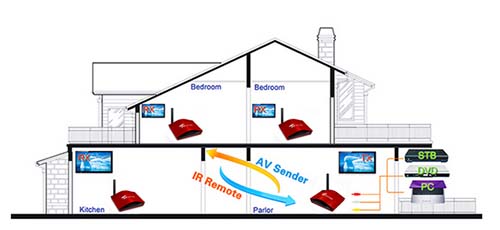PAKITE HDMI Video Sender - Advantage
Now, there is some of Full HDMI Wireless av sender( wireless av sender also known as Video Sender, Wireless TV sender, DigiSender ), Full HD Resolution with 10-50 Meter covering range. So what is the advantage of PAKITE HDMI Wireless AV Sender?
PAKITE Brand Wireless HDMI Transmitter and Receiver support 480P,576P,720P,1080I,1080P@60Hz resolution input by HDMI Jack, the output resolution is 720*576P.
PAKITE Brand HDMI Video Sender not the Full HD resolution, but support the most popular HDMI Jack with 720*576P resolution, that’s for cater to the market demands.
After review the above parameter, Full HDMI Wireless transmitter and receiver seems like much better than PAKITE Brand.
PAKITE Brand HDMI Video Sender support One transmitter and many receiver; But most of Full HD resolution video sender do not support one transmitter and many receiver, only for point to point transmission.
PAKITE Brand HDMI Video Sender support used at different rooms: But most of Full HD resolution video sender only support used at the same room, since the bandwidth the covering range will be very short, like 50 Meter or less.
PAKITE Brand HDMI Wireless AV Sender unit price is much cheaper than Full HDMI resolution, Full HDMI wireless av sender with 200 meter covering range unit price cost around 350-400usd per sets for wholesale, but as for PAKITE Brand Wireless AV Sender around 100usd for wholesale.
Comparing all the fact, 720*576P resolution will be much suitable for family use.








